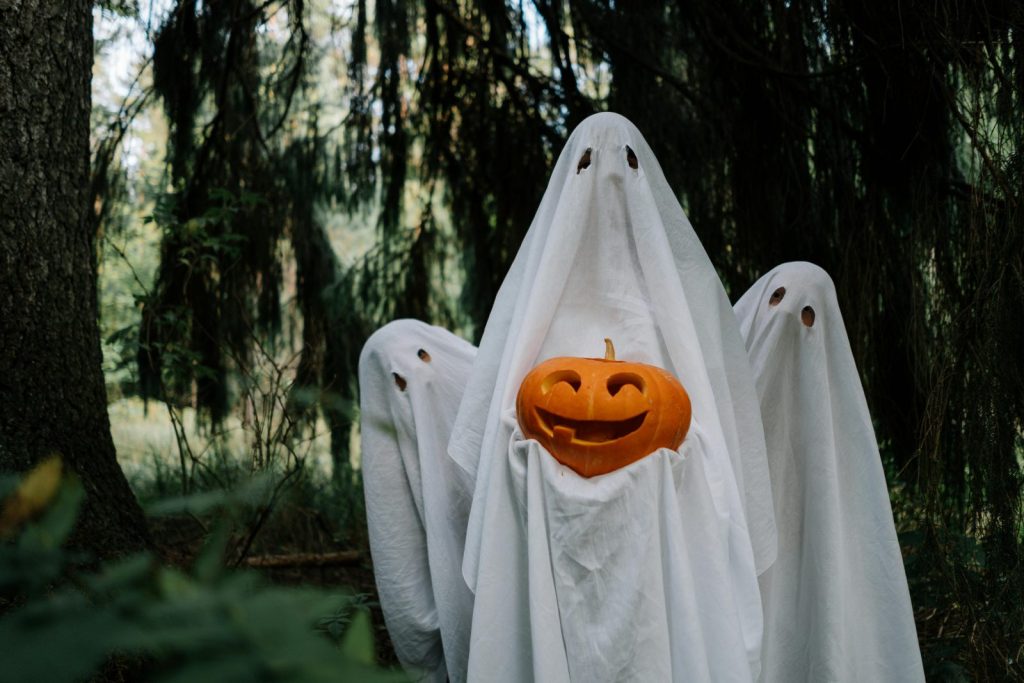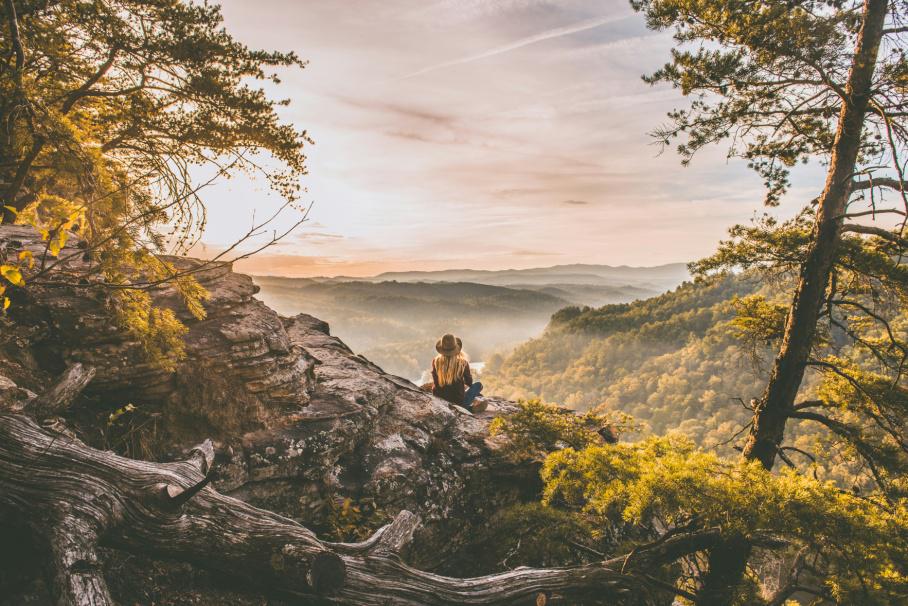
What is sustainable living? How Your Choices Shape a Sustainable Present and Future
By embracing sustainable living, we adopt practices that contribute to the well-being of the environment, society, and economy.

As the autumn air sets in and Halloween approaches, excitement builds for costumes, decorations, and sweet treats.
But with the fun comes a spike in waste—plastic candy wrappers, mass-produced costumes, and single-use decorations all contribute to environmental harm.
This year, why not aim for a spook-tacularly sustainable Halloween?
Here are some simple and fun ways to celebrate while keeping the planet in mind.
Every year, as Halloween draws near, children's excitement builds. They can’t wait to dress up in their favorite costume and wear face paint, sparkly eyeshadow, or colorful lipstick to complete their look. Like most kids, they want to immerse themselves in the magic of Halloween. But what seems like innocent fun might be a health risk.
Researchers tested different types of costume makeup (like lipstick, body paints, and eyeshadow) for metals. They found antimony (Sb) in all the products, ranging from 0.12 to 6.3 mg/kg. Lead (Pb), nickel (Ni), and cobalt (Co) were also found in most of the samples, while mercury (Hg) and arsenic (As) were present in smaller amounts.
They then estimated how much metal could be absorbed by people using the makeup, considering both children and adults who use it occasionally and adults who use it regularly for work.
For people who use makeup as part of their job (like performers), the levels of antimony and lead were high enough to exceed safe limits set by U.S. health guidelines.

Photo by Alesia Kozik: https://www.pexels.com/photo/woman-in-black-dress-applying-makeup-on-a-girl-6934582/
The amount of lead in body paint was particularly concerning, as it could raise blood lead levels significantly for all users. In regular adult users, the increase in BLL could be as high as 1.9 micrograms per deciliter (μg/dL), which is higher than the baseline safe level (1).
Even for children and adults who use the makeup only occasionally, lead levels could rise above safe levels.
Not to worry! We’re excited to share some quick and easy recipes for all-natural Halloween makeup that you can whip up right at home faster than you can shout “boo!” These DIY solutions will let you create fun, spooky looks without any toxic chemicals found in store-bought products—perfect for keeping your little ghouls and goblins safe while they enjoy the holiday.

Photo by Mikhail Nilov: https://www.pexels.com/photo/a-woman-in-sugar-skull-makeup-7706341/
Instead of purchasing new, mass-produced costumes, tap into your creativity with DIY outfits. You can make costumes from second-hand clothing, items around the house, or natural materials like leaves and twigs. You will reduce waste and have a unique look that stands out from store-bought costumes. Get the kids involved in crafting their costumes—it's a fun and educational way to teach them about sustainability.
Tips:
Halloween is a time for creativity, fun, and a little spookiness—but it doesn’t have to harm the planet. This year, why not take a more eco-friendly approach to decorating? With a few simple, sustainable ideas create a hauntingly beautiful atmosphere while reducing waste and environmental impact.
Nature is your best friend when it comes to eco-friendly Halloween décor. Collect fallen leaves, branches, pinecones, and acorns from your yard or local park to create rustic and spooky displays. These items are biodegradable and free! You can arrange them on your doorstep or mantle, make a wreath, or use them to build a natural centerpiece.
Pumpkins, of course, are Halloween staples. Use real pumpkins and gourds as decorations instead of plastic ones. After Halloween, you can compost or repurpose them for delicious fall recipes. And don’t forget to save the seeds for roasting—a tasty and sustainable snack!

Photo by Mathias Reding: https://www.pexels.com/photo/jacko-lantern-and-freshly-harvested-pumpkins-10011935/
Skip the plastic decorations and make your own DIY lanterns and ghost lights using old jars, cans, or paper. Paint or carve spooky faces onto them, add a candle or a solar-powered light, and watch them glow. For an extra creative twist, use old sheets or scrap fabric to make “floating” ghosts that hang from trees or doorways.

Photo by cottonbro studio: https://www.pexels.com/photo/ghosts-holding-a-carved-pumpkin-5435309/
Give new life to items you have around the house by turning them into Halloween decorations. Use old clothes to make scarecrows or fabric scraps to create banners, bats, or spider webs. Transform empty cereal boxes into haunted houses and old wine bottles into potion bottles or candle holders. The possibilities are endless when you upcycle materials instead of buying new plastic decorations.
If you’re purchasing Halloween decorations, look for items made from natural or recycled materials. Paper garlands, cardboard cutouts, and wooden signs are all compostable or recyclable alternatives to plastic decorations. After the holiday, recycle or compost them instead of sending them to a landfill.
Halloween wouldn’t be complete without some spooky lighting! Choose LED string or solar-powered lights to create that mysterious glow while saving energy. You can use them to line your walkway, wrap around trees, or illuminate your homemade decorations. LEDs use far less energy than traditional bulbs, making them an eco-friendly choice that lasts longer.
Halloween candy is often wrapped in plastic, which ends up in landfills. This year, consider offering sustainable, eco-friendly alternatives. Select candy with minimal packaging. You can also choose companies that use organic and fair-trade chocolates. If you’re hosting a party, homemade treats can reduce the waste from individual wrappers.

Photo by Charles Parker: https://www.pexels.com/photo/cheerful-children-with-sweets-on-stick-5859259/
Suggestions:
Plastic buckets and one-time-use bags are typical trick-or-treating gear, but sustainable alternatives exist. Encourage kids to use reusable bags, pillowcases, or cloth totes for candy collection. If you’re heading out with them, walk or bike around the neighborhood instead of driving to reduce your carbon footprint.
Trick-or-Treat Tips:
Compost and Recycle Post-Halloween
After the festivities are over, don’t let the waste pile up. Compost pumpkins and other organic decorations, and recycle any paper or cardboard materials you use. For costumes, store them for next year or donate them to charity or a local costume swap.
Post-Halloween Cleanup:
You can make your Halloween fun and eco-friendly with just a few thoughtful changes. One great way to start is by creating your own all-natural Halloween makeup—this can double as a fun family activity! Not only does it allow you to avoid harmful chemicals, but it also saves money, making it a budget-friendly choice. From DIY costumes to compostable decorations, every little step helps reduce your environmental impact while keeping the holiday spirit alive. Let’s celebrate Halloween sustainably and ensure the planet has a treat, not a trick!

By embracing sustainable living, we adopt practices that contribute to the well-being of the environment, society, and economy.

Sustainability goes beyond admiration; it is a commitment to maintaining the delicate balance between our species and the planet.

Dive into the world of traditional board games and discover their diverse health benefits. Explore expert insights on how these games contribute to well-being and mental acuity.

Natural deodorant is an effective and environmentally friendly product. It is a healthy option since traditional antiperspirants often contain chemicals.

Let’s discover the environmental impact of household waste, and hopefully, this will inspire us to create a new mindset.
Welcome to Sustainable Living by Science. With our scientific mindset, we are exploring how to nurture our well-being while caring for the environment. We are sharing the meaning of sustainability through evidence-based practices. Join us on this journey towards a greener, healthier future where science guides us to make the best choices for ourselves, the planet, and others.
All content is © 2024 by Sustainable Living by Science. All rights reserved.